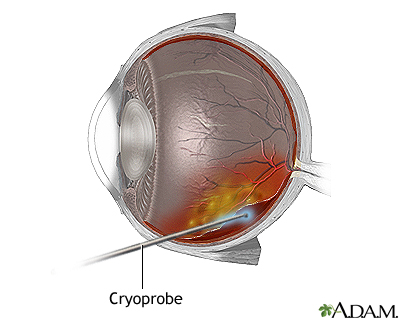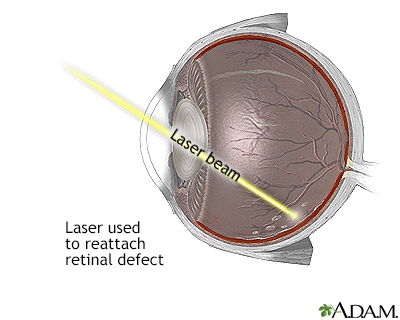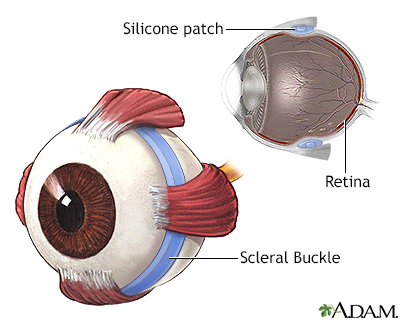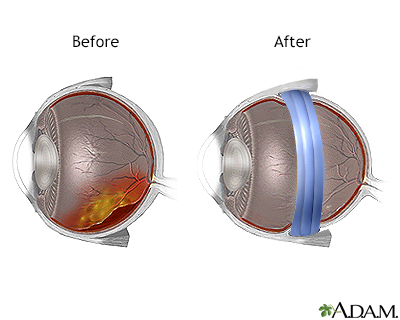Health exams for: #AGEGROUP#
The following exams, tests, and procedures are recommended for #AGEGROUPLOWER#.#FEMALETEXT#
Select a link from the list below to learn how and why each test is performed, as well how to prepare for it.

The following exams, tests, and procedures are recommended for #AGEGROUPLOWER#.#FEMALETEXT#
Select a link from the list below to learn how and why each test is performed, as well how to prepare for it.






The retina is the internal layer of the eye that receives and transmits images that have passed through and been focused by the lens and cornea.
The retina is the internal layer of the eye that receives and transmits images that have passed through and been focused by the lens and cornea.
Retinal detachments are associated with a tear or hole in the retina through which the internal fluids of the eye may leak, causing separation of the retina from the underlying tissues. This is most often caused by trauma, and the risk of retinal detachment after minor trauma, such as a blow to the head, is increased in the elderly, and in patients with tumors or inflammation near the retina. In some cases, retinal detachment occurs in the absence of trauma. Symptoms of retinal detachment include bright flashes, floaters, or loss of part of the visual field. Emergency retinal detachment surgery is necessary to prevent vision loss.
Retinal detachments are associated with a tear or hole in the retina through which the internal fluids of the eye may leak, causing separation of the...
The most common technique used to repair retinal detachment is called a scleral buckle. Prior to performing a scleral buckle procedure, breaks and tears in the retina are closed. There are two major methods used to close breaks and tears in the retina. Cryopexy, uses an intensely cold probe (cryoprobe). This produces an inflammation that leads to formation of a scar which holds the retina to the underlying tissue.
The most common technique used to repair retinal detachment is called a scleral buckle. Prior to performing a scleral buckle procedure, breaks and te...
A laser treatment (photocoagulation) can also be used to seals holes in the retina. The choice of cryopexy or photocoagulation is usually determined by the preference of the surgeon-both procedures are equally effective in most cases.
A laser treatment (photocoagulation) can also be used to seals holes in the retina. The choice of cryopexy or photocoagulation is usually determined ...
After sealing breaks and tears in the retina with either laser or cryoporbe treatment, the scleral buckle is applied. This consists of a silicone patch wrapped around the eye, compressing the globe and elongating it slightly, thus pushing the retina up against the posterior aspect of the eye, and sealing the detachment. The silicone patch is usually left in place permanently, unless it causes problems later, such as infection.
After sealing breaks and tears in the retina with either laser or cryoporbe treatment, the scleral buckle is applied. This consists of a silicone pat...
Scleral buckling for detachment may require a few days in the hospital. Keep the head elevated at all times. Patients should not bend over or strain with lifting or bowel movements. Vigorous exercise should be avoided for 3 to 4 weeks.
Scleral buckling for detachment may require a few days in the hospital. Keep the head elevated at all times. Patients should not bend over or strain ...
Review Date: 8/22/2022
Reviewed By: Franklin W. Lusby, MD, Ophthalmologist, Lusby Vision Institute, La Jolla, CA. Also reviewed by David C. Dugdale, MD, Medical Director, Brenda Conaway, Editorial Director, and the A.D.A.M. Editorial team.



